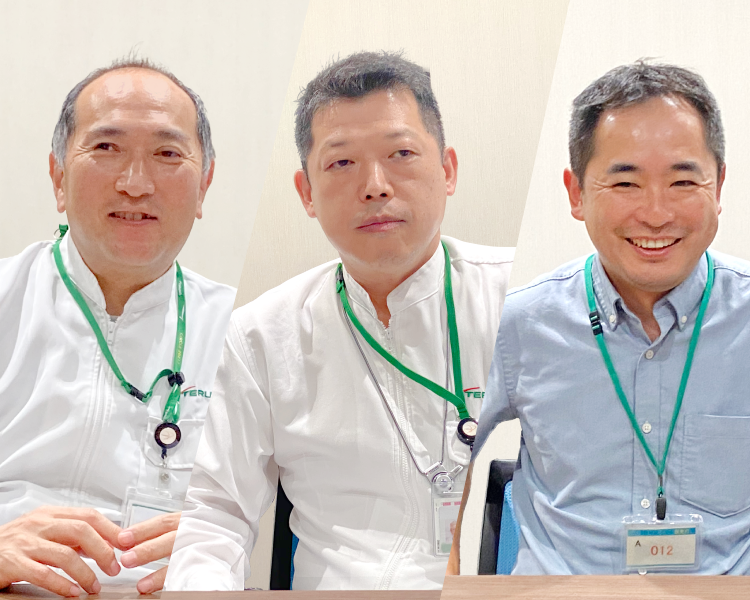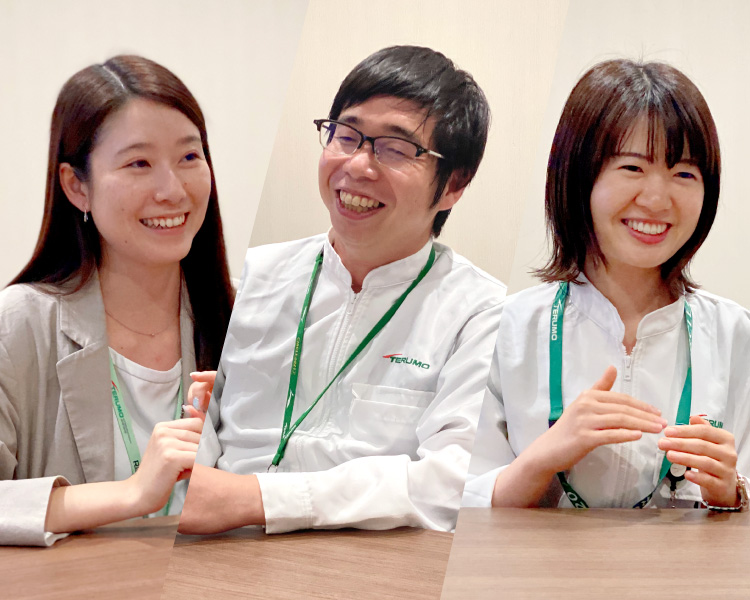For 30 years, Terumo has contributed to transradial access through product development. Now, our products are used not only in Japan but by healthcare professionals across the globe. Learn from the talk with three leaders of TIS Global R&D, whose dedication has shaped our current product portfolio.
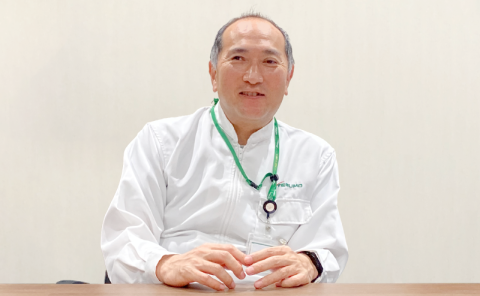
Yasushi Kinoshita
TIS Global R&D
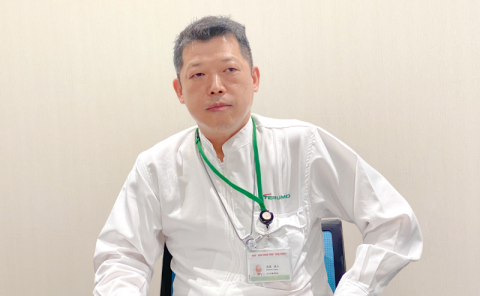
Hideto Nagata
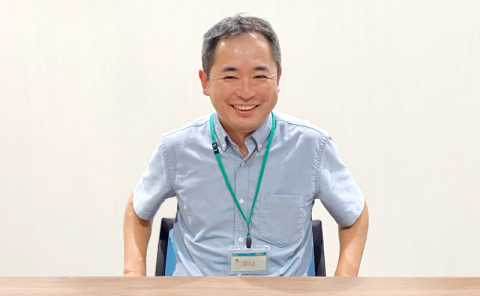
Ayu Takagi
*1 Terumo Medical Care Solutions (https://tmcs.terumo.com/en/)
-Yasushi, as head of TIS Global R&D, you must have faced numerous challenges. Can you share an episode that stands out for you?
Yasushi Kinoshita (YK): Over the years I’ve been involved in many projects, each with its own set of hurdles. But joining forces with industry counterparts is an experience that really stands out. It’s one thing to run a project internally, but collaborating with a different company gives you a whole new skillset. For instance, achieving a consensus within our own organization on product direction is fairly straightforward. But when collaborating with another company it becomes a much more complicated process.
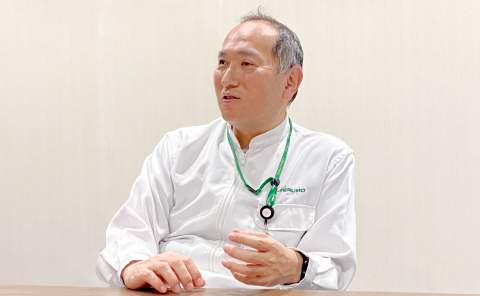
A product feature which we deem essential might be viewed unnecessary by the other party. Even if the product sample meets our criteria, our counterparts might have their own set of requirements that leads to further fine-tuning. Achieving a product that meets the demands of both sides takes time, and can be incredibly challenging.
Yet, as we spend more time together, sharing insights and offices, a mutual understanding begins to form. We not only built trust but in some instances, professional friendships. It was an experience that underscored the importance of effective communication. And eventually we found it—a product we could both be proud of. Once we had that, our goal shifted to delivering it to customers as soon as possible. Having this shared objective became the driving force that brought it to market.
-“A product to be proud of.” How important is this principle to you—this belief in the value of a product?
YK: It’s absolutely paramount. As a leader, your belief in the product guides the rest of the team, and if you’re not wholeheartedly behind the product, how can you expect to inspire support in others? I’ve heard peers lament how their projects are constantly deprioritized by other departments, never moving from the bottom of the pile. But I see that as a leadership challenge, not a departmental one. It’s our duty to convey the value of our product in a way that ignites a spark of enthusiasm, so that they want to get behind it too. If you can achieve that, then even if your project is buried deep down in the pile, someone will pluck it out and start working on it.As long as we can clearly communicate the value of the product, we can help pave the way to its success.
-What do you consider to be the most important aspect of R&D?
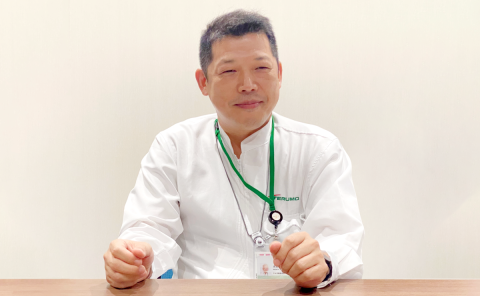
Hideto Nagata (HN): Engineers tend to see the end goal as successfully launching a product to market, but we need to think beyond that. I make a point to gather feedback from professionals in clinical settings interfacing with our product, and relay this back to those involved in the launch.
This strengthens the bond between all involved, and it means when an issue arises, we have a unified front to tackle the problem together.
Ayu Takagi (AT): As Yasushi mentioned earlier, I also believe engineers have a responsibility to not only understand, but to effectively communicate the value of the product. They also need to be able to offer guidance on correct handling and damage prevention, and highlight the product’s key features. This is not only for doctors, but also for associates such as those responsible for production.
Sharing insights on how the product will be used, or emphasizing the standout features will boost awareness in quality control. Given that MicroVention deals with medical devices for neuro intervention, effective communication is pivotal and will have a positive effect through every stage.
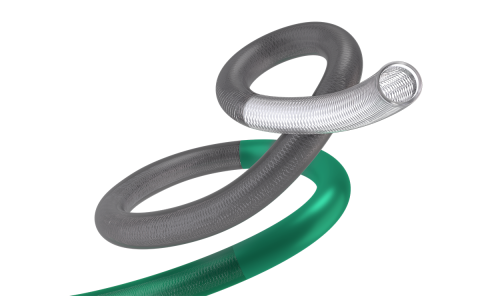
- Ayu, you’ve spent an extensive part of your career outside of Japan. Surely working in the US posed its own set of challenges?
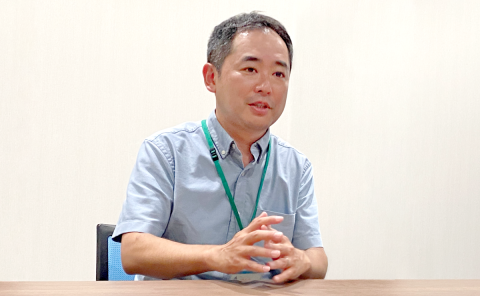
AT: You can say that again! I’ll never forget my first day. Working overseas was something I’d wanted to do, so I was thrilled to be there, but I hadn’t fully anticipated the language barrier. My grasp of English was far from perfect, and I had absolutely no idea what anyone was saying. In meetings, I had ideas but struggled to get the words out.
However, I knew sitting back in silence wasn’t the way to go. Every time I spoke up it was like a mini event, you could almost hear the suspense in the room as everyone waited to see what I, with my limited English, would say next. Admittedly, it was a tad intimidating! But, having built a reputation as an engineer back in Japan, I turned to what I knew best—sketching out ideas in diagrams and relying on written explanations.
Slowly but surely, my colleagues began to recognize my professional expertise behind my less-than expert English. And after around three to four years, we were finally at a place where we were communicating on the same level.Around the same time, a project was handed over from the Japan team to the US side. Sensing an opportune moment, I put my name forward to be leader. The experience that followed was invaluable.
- Did you ever want to throw in the towel and head back to Japan?
AT: When I first went to the US, I was among the few Japanese members based there. There were times when I felt isolated, but I never thought about leaving or giving up. I went to the US with the ambition to leave my mark. Having led teams in Japan, I was keen to do the same abroad.
- Hideto, you also spent some time away from TIS, working in development at TMCS. What was that experience like?

HN: When I was transferred, I had an established career at TIS and the idea of starting in a completely new environment with a new set of co-workers was daunting. I’ll admit that there were times when I really missed my old work place. But, that experience at TMCS was invaluable and has brought me to where I am now.
In particular, at TMCS I was involved in activities that resemble the current product life cycle management at Ashitaka factory. There was nothing like that set up at Ashitaka back then, and I can see how that experience has been indispensable in helping me hone my understanding of the process.
My time at TMCS also taught me a lot about device performance. I remember this one instance when a doctor reported a problem with a particular device. It turned out that the cause was from using the device in a way we hadn’t imagined, but when I pointed that out, the backlash was severe.It underlined for me the importance of the engineer to envision the full spectrum of possibilities, both the imagined and the unimageable. We swiftly addressed the issue and regained the trust of the doctor.
Now when I receive a report on a device’s performance, I delve deep into the context—how it was used, the circumstances, every intricate detail. Some might see my line of questioning as overwhelming, as if they’re under interrogation, but that’s not the intent. The better our understanding, the more likely we will be to find the root cause and implement an effective solution. It’s also a great opportunity to get candid feedback from the doctors, helping us engineers to design the best possible product for our customers.
- As pivotal figures leading R&D at TIS, how do you perceive each other’s roles?
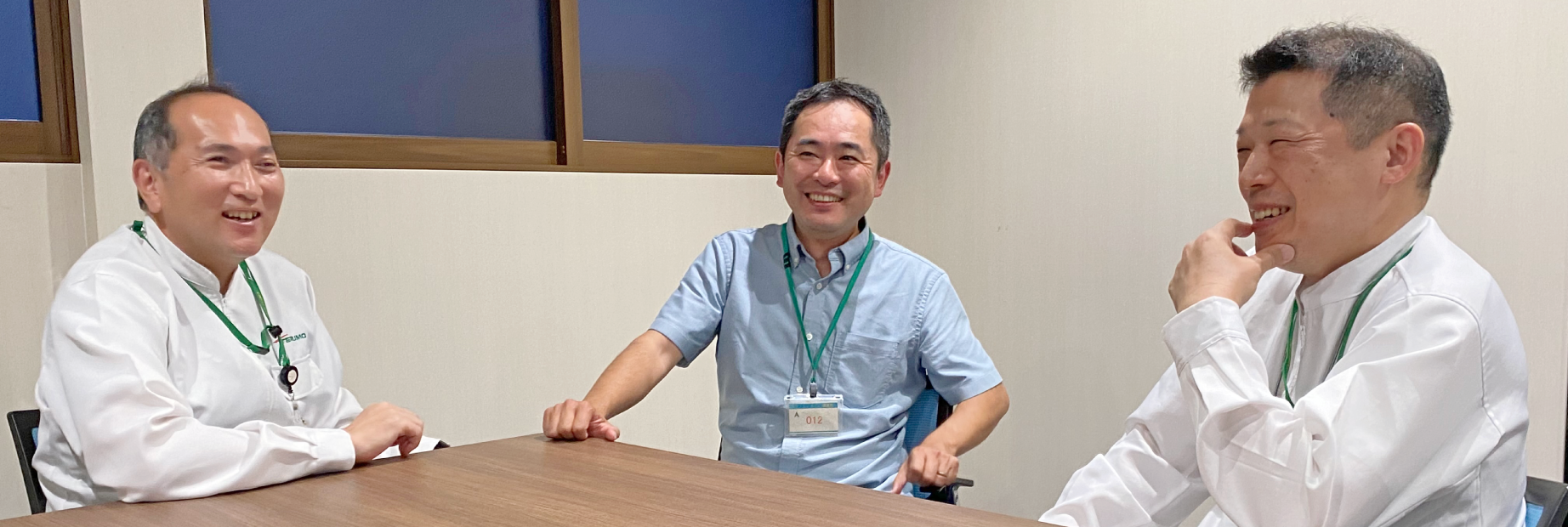
AT: That’s no small ask, Yasushi! As for me, I have a huge admiration for Yasushi’s knack to inspire and guide people. I trust in his vision for TIS implicitly, and know under his leadership we will head in the right direction. And I’ll do all I can in my role to support him.
So, when I heard Yasushi’s vision for the R&D Strategy Office, I knew Ayu was the right person for the job. With their combined leadership, I’m optimistic about positive changes in our global operations. And, on a lighter note, as the years have passed, I’ve found it reassuring to have trustworthy peers for those times when I need to let something out. So, I hope you both remain willing to lend an ear when the need to vent arises!
YK: It’s probably the fact that we’re all open about our frustrations that makes us such good listeners. (laughs)
AT: That, and the fact that I don’t sweat the small stuff!
HN: Well, as long as there’s room for the occasional moan, I’m good.
*2 Terumo Clinical Supply Co., Ltd.: Development and production of interventional radiology devices.
*Information accurate as of October 2023.

